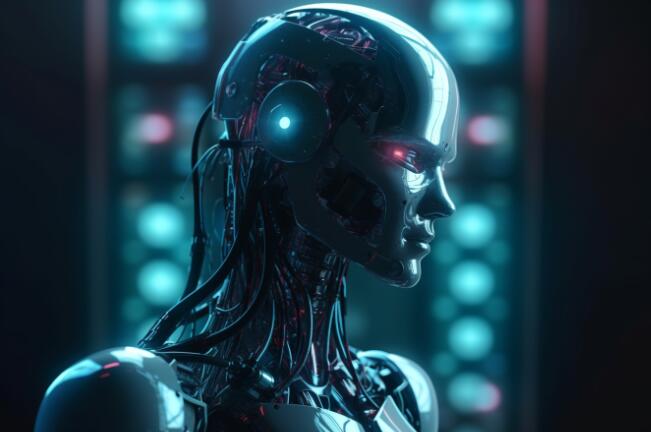A major revolution has arrived in 3D modeling technology! The PartCrafter project, jointly developed by Peking University, ByteDance, and Carnegie Mellon University, has officially been unveiled. This project can generate high-precision, structured 3D models from a single RGB image, completely overturning the complex traditional process of "segmentation first, reconstruction second." This technology not only improves generation efficiency but also infers the 3D geometry of invisible structures, showcasing the great potential of AI in the field of 3D generation. The AIbase editorial team has compiled the latest information to provide you with an in-depth analysis of the innovations and impacts of PartCrafter.
PartCrafter: From a Single Image to a Structured 3D Model
PartCrafter is an innovative structured 3D generation model that can directly generate 3D models containing multiple semantic parts from a single RGB image, achieving end-to-end generation. Unlike traditional methods that require segmentation of the image first and then reconstruct each part separately, PartCrafter uses a unified generation architecture, eliminating the need for pre-segmented input to generate the complete 3D scene in one step. This feature enables it to perform excellently in handling both single objects and complex multi-object scenes.

According to AIbase, the core innovations of PartCrafter include a compositional latent space and hierarchical attention mechanism. The compositional latent space assigns independent latent token collections to each 3D part, ensuring clear semantics and editing flexibility between parts. The hierarchical attention mechanism processes information flow within and between parts simultaneously, guaranteeing high coordination in local details and global consistency of the generated 3D model.
"Perspective" Capability: Inferring Invisible Structures
One of the most impressive features of PartCrafter is its "perspective" capability. Even when certain parts of the components are occluded in the input image, the model can still infer and generate complete 3D geometric structures through powerful generative priors. This ability is due to its 3D grid diffusion Transformer (DiT) based on pre-training, which inherits the generative capabilities of large-scale 3D datasets and further optimizes them through innovative architectural designs. AIbase tests show that PartCrafter can generate high-quality 3D meshes and surpass existing methods in reconstructing invisible parts, demonstrating the unique advantages of structured generative priors in 3D understanding.
Technical Breakthrough: Beyond Traditional Two-Stage Methods
Traditional 3D generation methods usually adopt a two-stage process, first performing semantic segmentation of the image and then reconstructing each part individually, resulting in low efficiency and susceptibility to segmentation errors. PartCrafter eliminates the dependency on pre-segmentation through a unified generation architecture, achieving dual breakthroughs in generation quality and computational efficiency. AIbase learned that PartCrafter can complete the generation from a single image to a structured 3D model in about 40 seconds, far exceeding traditional methods in efficiency.
Experimental results show that PartCrafter has achieved **SOTA (State-of-the-Art)** performance in structured 3D generation tasks, even surpassing its underlying 3D generation model in object reconstruction fidelity. This result indicates that understanding the composite structure of objects can significantly improve the overall quality of 3D generation, providing new ideas for future 3D modeling.
Data Set Innovation: Integrating Large-Scale 3D Resources
To support part-level generation, the PartCrafter team carefully constructed a large dataset containing 130,000 3D objects, of which 100,000 objects have multi-part annotations. These data integrate well-known 3D resource libraries such as Objaverse, ShapeNet, and ABO, providing rich supervisory information for model training by mining part-level annotations. AIbase believes that the openness of this dataset will provide valuable resources for research in the field of 3D generation, helping more teams explore the potential of structured modeling.
Industry Impact: Reshaping the 3D Content Creation Ecosystem
The release of PartCrafter marks a new phase in 3D modeling technology. Its end-to-end generation capability and ability to handle complex scenes give it broad application prospects in fields such as game development, virtual reality, industrial design, and digital twins. AIbase observes that PartCrafter can not only generate decomposable 3D meshes but also supports flexible part editing, providing creators with higher freedom.
Social media developers have responded enthusiastically to the innovativeness of PartCrafter, believing that its "simple yet effective" design concept has redefined the paradigm of 3D generation. The project team stated that the code, pre-trained models, and Hugging Face demo version will soon be released, further lowering the technical threshold and empowering global developers.
Future Prospects: The Intelligent Era of 3D Modeling
The emergence of PartCrafter is not only a technological breakthrough but also a profound empowerment of the 3D content creation ecosystem. AIbase predicts that as PartCrafter becomes open-source and further optimized, 3D modeling will become smarter and more popularized. In the future, this technology may extend to real-time 3D generation, dynamic scene modeling, and even multimodal input, bringing more possibilities to fields such as the metaverse, robot vision, and intelligent manufacturing.









